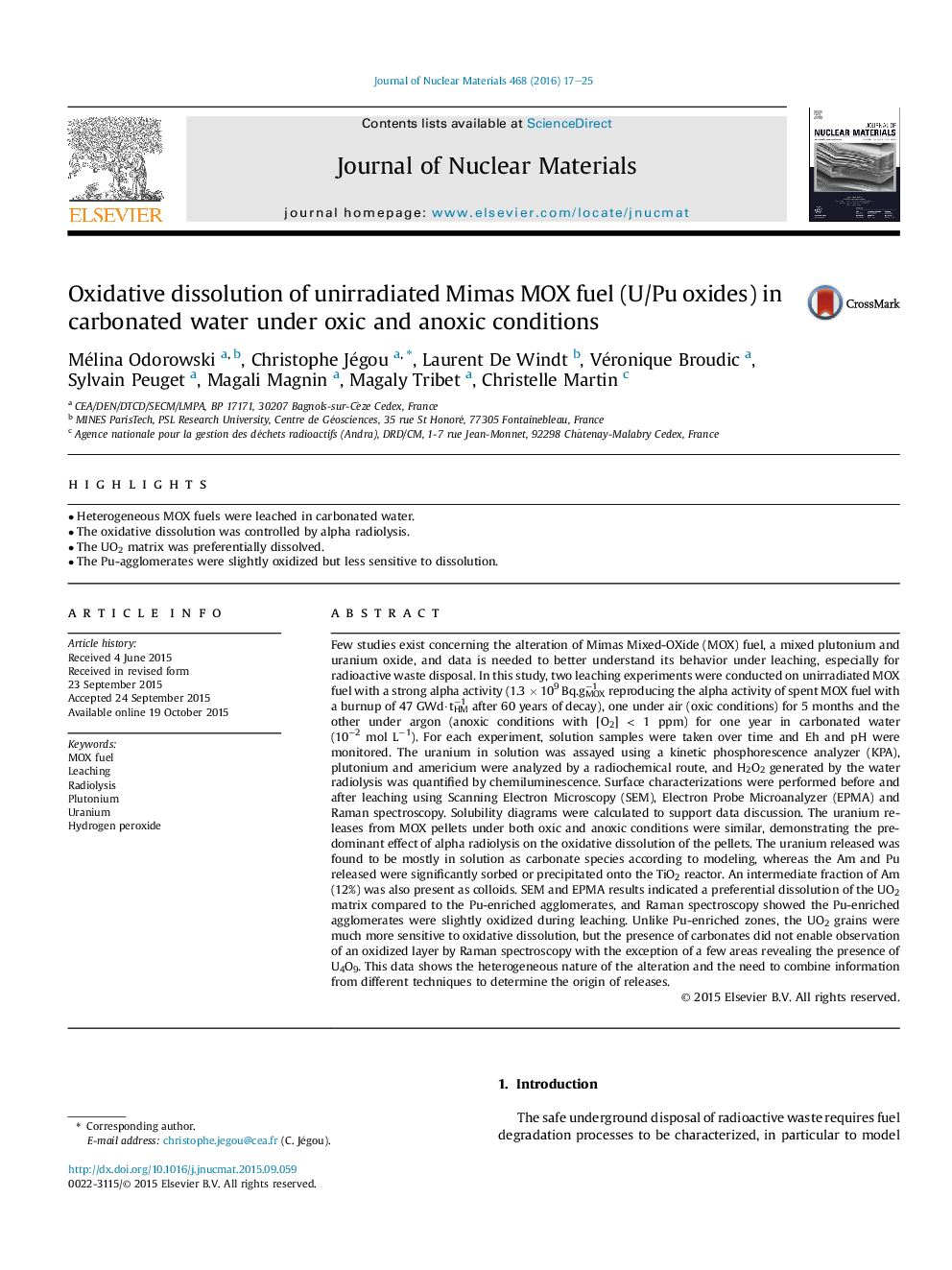| کد مقاله | کد نشریه | سال انتشار | مقاله انگلیسی | نسخه تمام متن |
|---|---|---|---|---|
| 1564810 | 1514178 | 2016 | 9 صفحه PDF | دانلود رایگان |

• Heterogeneous MOX fuels were leached in carbonated water.
• The oxidative dissolution was controlled by alpha radiolysis.
• The UO2 matrix was preferentially dissolved.
• The Pu-agglomerates were slightly oxidized but less sensitive to dissolution.
Few studies exist concerning the alteration of Mimas Mixed-OXide (MOX) fuel, a mixed plutonium and uranium oxide, and data is needed to better understand its behavior under leaching, especially for radioactive waste disposal. In this study, two leaching experiments were conducted on unirradiated MOX fuel with a strong alpha activity (1.3 × 109 Bq.gMOX−1 reproducing the alpha activity of spent MOX fuel with a burnup of 47 GWd·tHM−1 after 60 years of decay), one under air (oxic conditions) for 5 months and the other under argon (anoxic conditions with [O2] < 1 ppm) for one year in carbonated water (10−2 mol L−1). For each experiment, solution samples were taken over time and Eh and pH were monitored. The uranium in solution was assayed using a kinetic phosphorescence analyzer (KPA), plutonium and americium were analyzed by a radiochemical route, and H2O2 generated by the water radiolysis was quantified by chemiluminescence. Surface characterizations were performed before and after leaching using Scanning Electron Microscopy (SEM), Electron Probe Microanalyzer (EPMA) and Raman spectroscopy. Solubility diagrams were calculated to support data discussion. The uranium releases from MOX pellets under both oxic and anoxic conditions were similar, demonstrating the predominant effect of alpha radiolysis on the oxidative dissolution of the pellets. The uranium released was found to be mostly in solution as carbonate species according to modeling, whereas the Am and Pu released were significantly sorbed or precipitated onto the TiO2 reactor. An intermediate fraction of Am (12%) was also present as colloids. SEM and EPMA results indicated a preferential dissolution of the UO2 matrix compared to the Pu-enriched agglomerates, and Raman spectroscopy showed the Pu-enriched agglomerates were slightly oxidized during leaching. Unlike Pu-enriched zones, the UO2 grains were much more sensitive to oxidative dissolution, but the presence of carbonates did not enable observation of an oxidized layer by Raman spectroscopy with the exception of a few areas revealing the presence of U4O9. This data shows the heterogeneous nature of the alteration and the need to combine information from different techniques to determine the origin of releases.
Journal: Journal of Nuclear Materials - Volume 468, January 2016, Pages 17–25